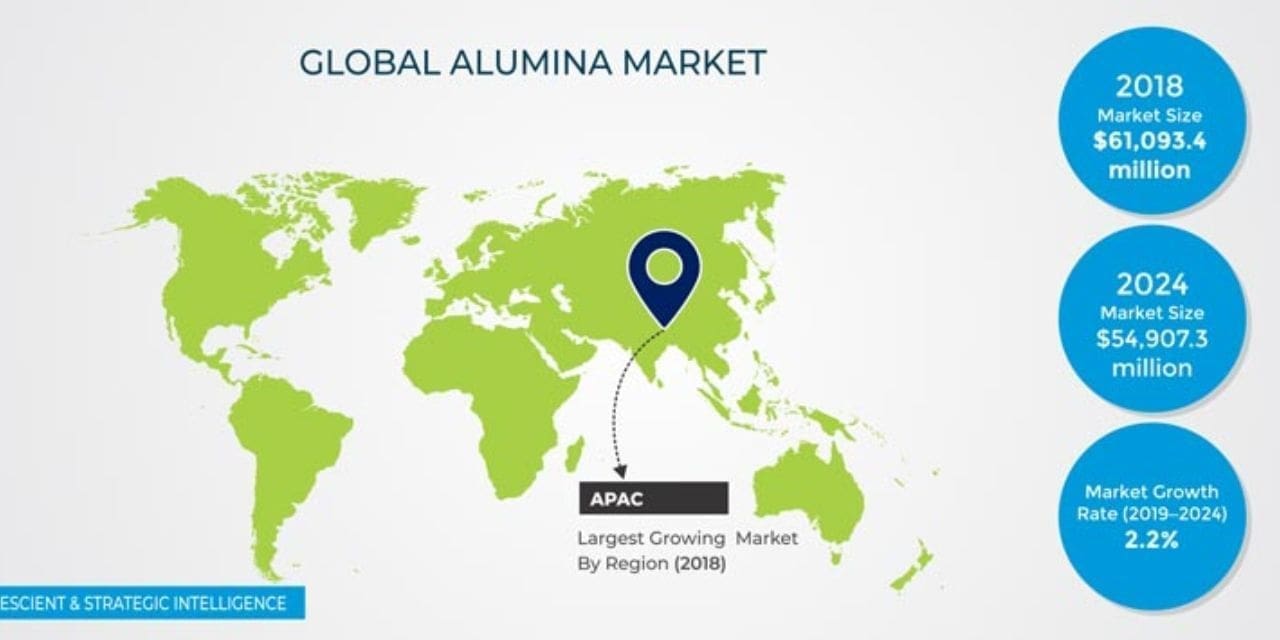“Rising use of activated alumina in tooth implants, as well as hip prosthesis backed by their anti-corrosion characteristics is anticipated to drive sales in the market. Besides, growing demand for highly effective medicines in both developed and developing countries would augment the market,” says a lead analyst at FMI.
According to Future Market Insights (FMI), the global activated alumina market, sales of activated alumina is to reach a valuation of US$ 906.4 million by the end of 2022. The market is likely to reach a valuation of US$ 1,465.0 million in 2032. Robust domestic demand for textile dye and decolorization of clothes are some of the key factors responsible for growth in the activated alumina market.
Decolorization in the textile industry refers to elimination of color. More than 10,000 distinct pigments and dyes are used in the textile industry, with the azo class of synthetic dyes accounting for more than half of all dye production. More than 2,000 azo dyes with various structural characteristics are used commercially.
It is crucial to totally remove these azo dyes before they enter the effluent stream for both environmental and health concerns since they may turn cancer-causing in environments with low oxygen levels. Amphoteric characteristics of alumina would thus make it advantageous to use activated alumina to bond and decolorize azo dyes.
Both acidic and basic pigments can be used to dye the same particle. The most economical process for azo dye extraction tends to make use of the amphoteric capability of decolorizing alumina, as well as the capacity to reactivate alumina at temperatures over 400 C and reuse the alumina. This will create new growth opportunities for activated alumina sales in the next ten years.
Key Takeaways from Activated Alumina Market Study
The global market for activated alumina is estimated to witness a CAGR of 4.9% on the basis of value from 2022 to 2032.
- The North America and Europe are expected to collectively hold around 45.3% of the overall activated alumina market share.
- Based on application, the adsorbent segment is estimated to create an incremental opportunity of about US$ 246.7 million during the period of 2022 and 2032 in the global market.
- The U.S. is a prominent importer of activated alumina with an estimated import volume of 111,426 tons of the chemical.
- Germany, the U.S., China, Korea, Japan, and India are considered to be the top countries propelling sales of activated alumina.
Competitive Landscape: Activated Alumina Market
The market for activated alumina is estimated to be a consolidated industry, where key players are expected to account for a leading share of the market. BASF SE, Sumitomo Chemical Co., Ltd., Honeywell International Inc., Huber Engineered Material, Axens Canada Specialty Aluminas Inc., Porocel, Bee Chems, Garg Chemical Company, Shandong Zhongxin New Material Technology Co., Ltd., Sigma-Aldrich Corporation, Sorbead India, AGC Chemicals Pvt. Ltd., and Hengye Group among others are some of the manufacturers of activated alumina profiled in the full version of the report.
Key players are focusing on increasing their production capacity to enhance their market footprint all over the globe and to gain traction over their competitors. Further, certain key players are focusing on investing in activated alumina production owing to a significant increase in terms of the high demand from the textile industry.

